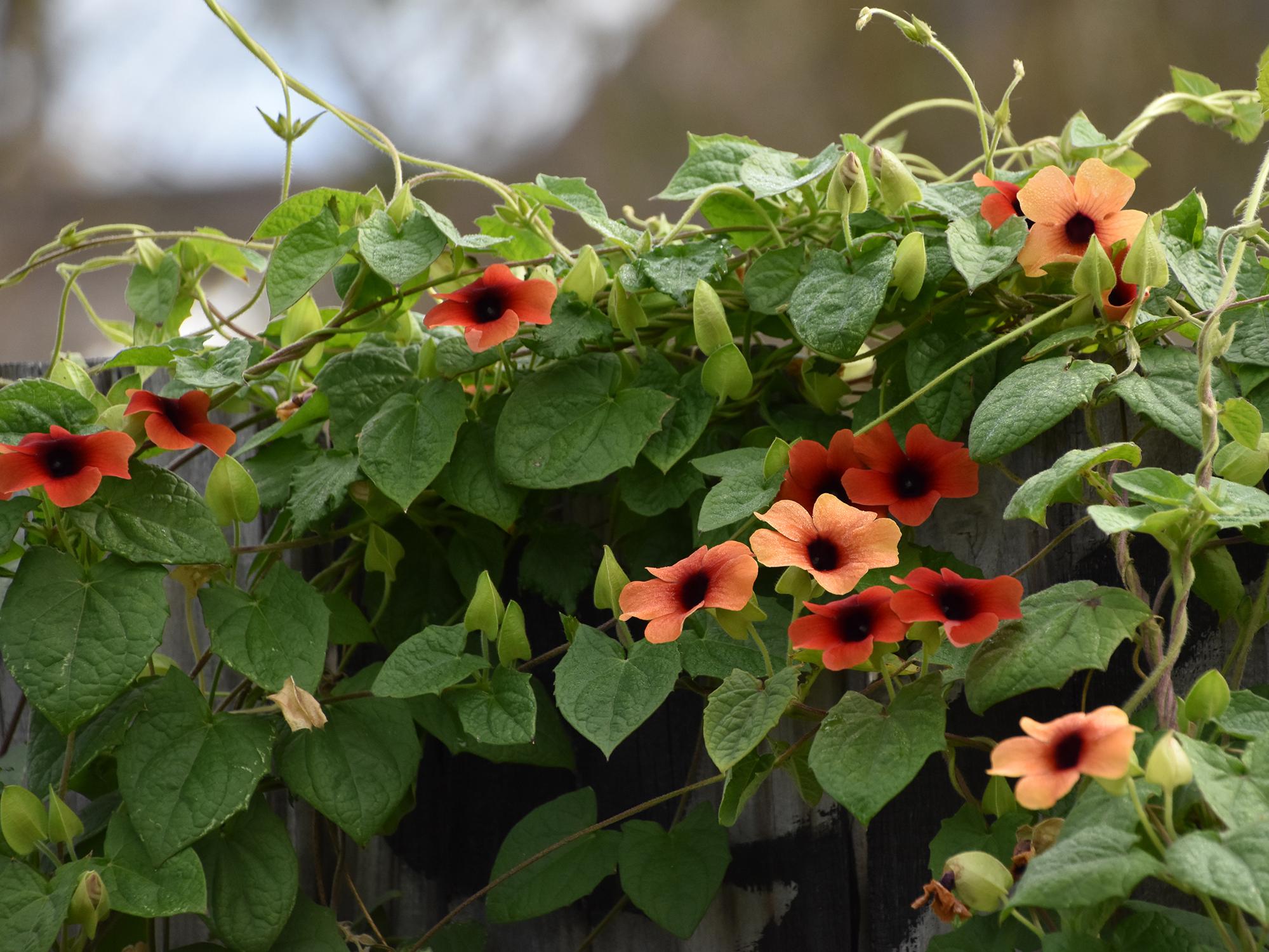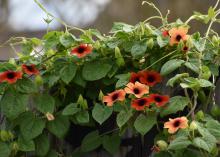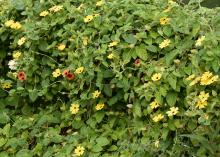Information Possibly Outdated
The information presented on this page was originally released on December 11, 2017. It may not be outdated, but please search our site for more current information. If you plan to quote or reference this information in a publication, please check with the Extension specialist or author before proceeding.
Try black-eyed Susan vine for a resilient ground cover
Most folks have poinsettias and entertaining on the agenda during the holidays, but for this week’s column, I want to highlight a plant that has been an outstanding performer for me all year.
It took this past weekend’s hard freeze to finally shut down my black-eyed Susan vine (I’m going to use the abbreviation BES for this flower), known botanically as Thunbergia alata. For many gardeners, in their experience this is traditionally a basket plant that deserves to be grown more often.
These plants are not related to our garden-variety BES, but they have similar looking flowers with dark centers surrounded by colorful petals. This annual vining plant starts out small but grows fast, and it readily scampers up any fence.
Its flower petal colors range from yellow to orange and white. An interesting selection that I like is African Sunset. This variety starts out a rusty orange, and, as it ages, the color will change, reflecting the various warm colors of sunset.
I got the idea of planting the BES from seeing it being grown in the Mississippi State Trial Gardens on the main campus in Starkville. Those plants were being trained to grow up a set of supports, but what caught my eye was how the plants created a fine and dense ground cover.
I have a grouping of subirrigated EarthBoxes that I used last year to create a small garden with plants to attract pollinators and butterflies to my home landscape. I choose a mix from the tropical Asclepias variety with red and yellow flowers, along with the variegated Monarch Promise and the yellow-flowered and the rusty-orange African Sunset.
Both grew great in the EarthBoxes. By the end of the year, the BES had almost completely overrun the butterfly weed. This turned out OK because we didn’t have any Monarch visitors until November and actually watched Monarchs emerge between Christmas and New Year’s.
The BES came back with a vengeance this year. I was surprised that four of the six original plants overwintered in our coastal Mississippi garden, along with numerous seedlings. I didn’t realize that BES could be that aggressive.
Not only has my small wire fence been completely covered up, but the BES also decided to take on my 8-foot privacy fence. I’ll admit I installed a few eye bolts and some fishing line to encourage it to climb.
The best part of having all of this BES has been all the pollinator and butterfly action -- lots of Gulf fritillary butterflies, yellow sulfurs and Monarchs (again, no caterpillars feeding on the butterfly weeds, I think because they can’t find them). We also saw the occasional hummingbird.
If you think you might like to try BES in your garden next year, seeds are readily available. Buy some from your local garden center, sit back and enjoy all of the winged visitors.





